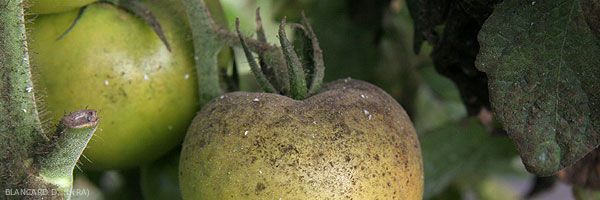
Fumagine
Many insects, including aphids, whiteflies and mealybugs, have to draw large amounts of sap in order to meet their protein needs. This forces them to reject excess sugar, in large amounts, in the form of honeydew. This then contaminates the surface of the parts of the blade colonized by these insects.
This sweet honeydew is a real boon to several fungi phylloplane tomato that use it for food, and which are at the origin of the sooty mold ( sooty mold ). Indeed, their development leads to the gradual appearance of one to several molds on the blade (figures 1 to 3), the stem (figure 4) and even the fruits (figures 5 and 6); they vary in color depending on the fungal species ( Alternaria spp., Cladosporium spp., Capnodium sp., Penicillium sp., etc.).
This sooty mold is harmful because it more or less disrupts the photosynthesis of plants. Only the control of pest populations can remedy this.
This sooty mold is harmful because it more or less disrupts the photosynthesis of plants. Only the control of pest populations can remedy this.
In the presence of sooty mold, we advise you to observe the plants more closely in order to detect which insect is the parasites, then to consult its specific sheet:
- Aphids .





